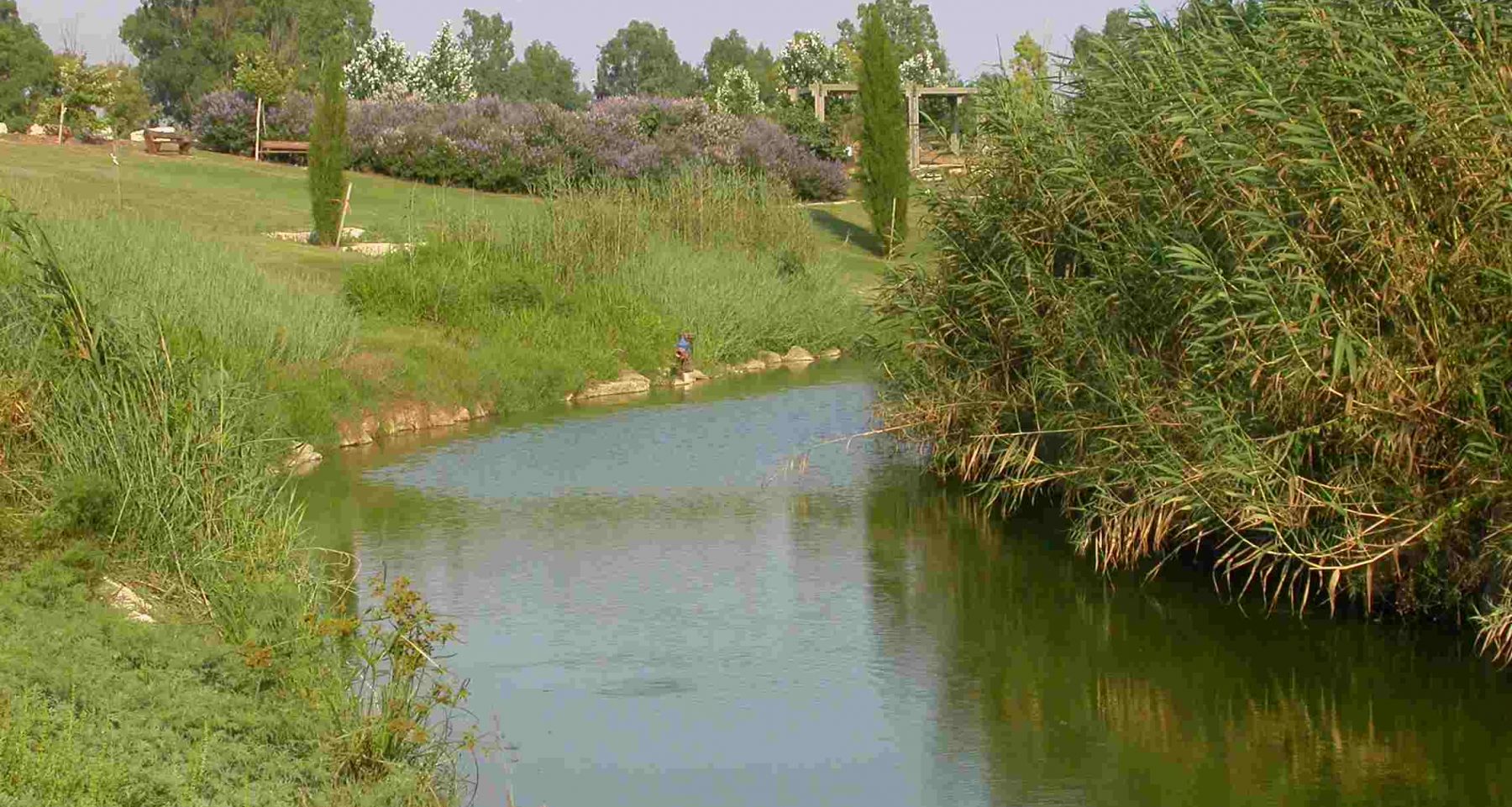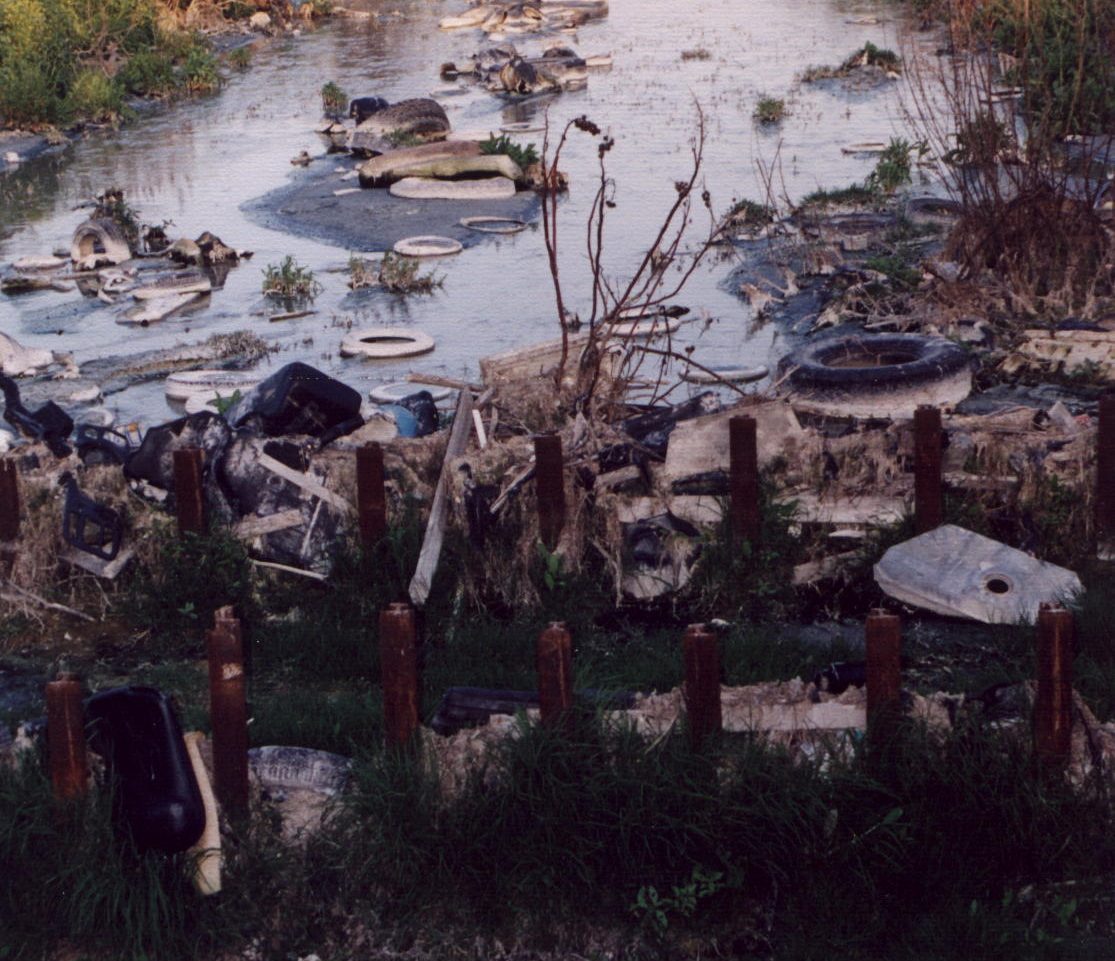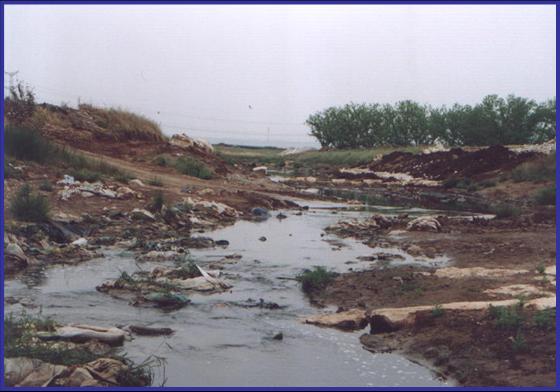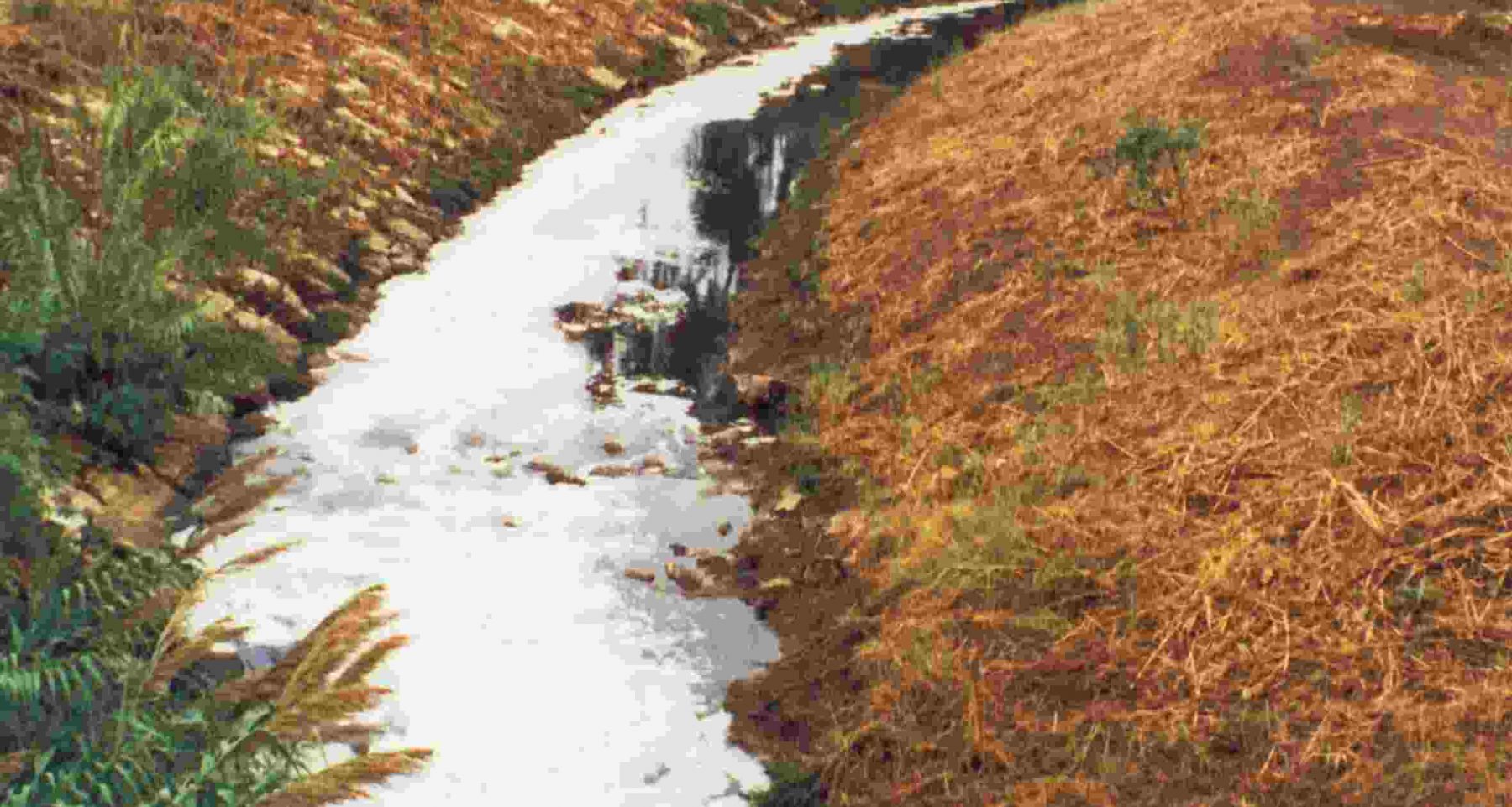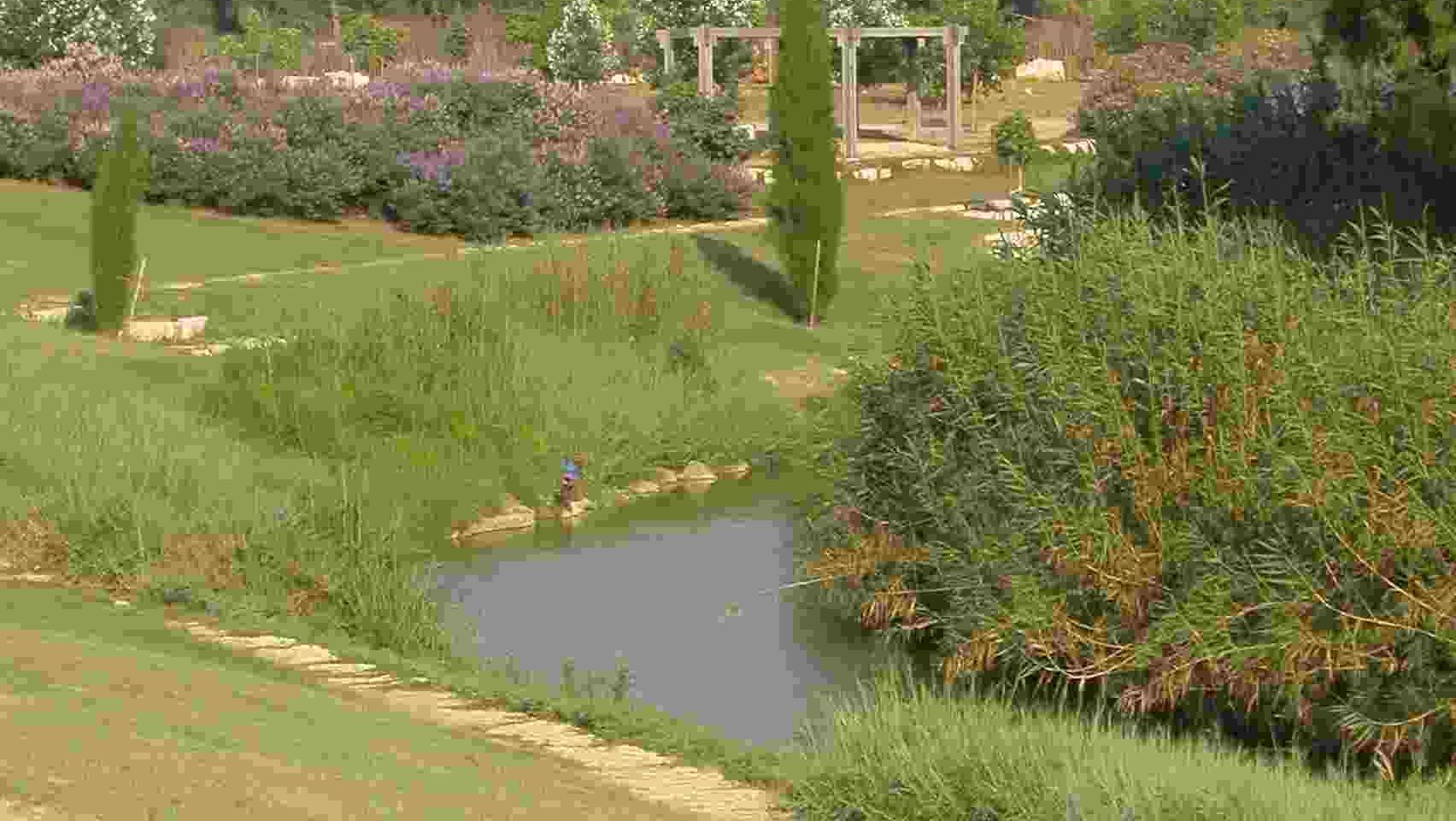Overview
The Alexander River Restoration Project is Israel’s leading river restoration and was awarded the Thiess International Riverprize in 2003. Implemented by Israeli agencies, with cooperation and support from local Palestinian officials in an unprecedented show of solidarity, the project aims to restore a river severely degraded by untreated sewage and pollution from more than 70 sources–in both Palestinian and Israeli territory. Thus far, project activities have centered around creating water treatment infrastructure to eliminate pollutants from the watershed and constructing public parks and recreational facilities along restored stretches of the river. These measures have precipitated a significant improvement in water quality and an overwhelming show of public support and interest in the restoration. The Alexander River has become a source of local pride, a magnet for visitors from all over the region, and a bridge between Palestinians and Israelis.
Quick Facts
Project Location:
Alexander River, Isreal, 32.3847679, 34.89138209999999
Geographic Region:
Middle East
Country or Territory:
Israel
Biome:
Freshwater
Ecosystem:
Freshwater Rivers & Streams
Area being restored:
14,000 acres
Organization Type:
Governmental Body
Location
Project Stage:
Implementation
Start Date:
1995-08-21
End Date:
1995-08-21
Primary Causes of Degradation
Urbanization, Transportation & IndustryDegradation Description
Two central problems have plagued the river for years: pollution from a variety of domestic, agricultural and industrial sources and development pressures in the open space surrounding the river that threaten its potential for leisure and recreation uses. The Palestinian City of Nablus is located at the source of the Alexander River, and the city has no sewage solution. Thus, the city’s raw sewage flows into the river and causes severe pollution. In all, some 70 sources of pollution are discharged into the Nablus Stream, which flows through the Palestinian Authority, and then into the Alexander River. Another 25 different pollution sources plague the river from the Israeli side.
Project Goals
– To address the sources of pollutants causing the degradation of the Alexander River
– To facilitate the ecological rehabilitation of the river’s flora and fauna, with special attention given to the rare and protected Nile soft-shell turtle (Trionyx triunguis) and to the preservation of its breeding sites along the river.
– To protect the open spaces along the river and enable leisure and recreational activities in combination with agriculture
Monitoring
The project does not have a monitoring plan.
Stakeholders
In order to promote the river restoration process, the Alexander River Restoration Administration involves senior sources on the national, regional and local levels — e.g. ministers, Parliament members, authority leaders, organizational chairmen and general managers, etc. Furthermore, the administration has made public involvement in all levels of planning and implementation a top priority. Project activities are conducted via a transparent process of intense public participation guided by the slogan “Returning the River to the People,” and both children and adults are deeply involved at all levels.
Description of Project Activities:
In 1995, a comprehensive master plan for the restoration of the whole Alexander River Basin was prepared by an interdisciplinary planning team headed by Architect Amos Brandeis. This master plan, having been approved by all 20 partners, provides a foundation for the restoration project and includes goals, strategies and an action plan.
The implementation phase began in 1998 with several projects aimed at restoring the river. These projects address a wide variety of restoration issues, including: removal of pollutants, management of the water supply, restoration of targeted sections of the river, overall ecological rehabilitation, drainage and flood defense, development of river parks (i.e. including a "demonstration project"), construction of a pedestrian and bicycle path along the river, education and public involvement, etc.
Pollution Mitigation -- To stop the discharge of pollution/sewage from the Palestinian Authority (via the Nablus River) and from the Israeli towns of Netanya and Kfar Yona, an "emergency solution" was implemented in 2002 until such time that a joint treatment plant--which will treat wastewater from both the Palestinian side and the Israeli side--can be established. In the first stage, the polluted water is pumped from the riverbed adjacent to the "green line" (i.e. the dividing line between the Palestinian Authority and Israel) and undergoes extensive treatment at the purification plant. It is then returned to the same place in the river"”but in much better quality. The sewage reaching beyond the "green line" is diverted by a small dam that was built. This "emergency solution" will be integrated with the permanent solution in the future.
Riverbanks -- Approximately 18,000 cubic meters of earth were removed from the banks in order to reduce the slope from a steep incline at a ratio of approximately 1:2 to one of 1:5. The resulting moderate incline has enabled the growth of a lush bank vegetation, pedestrian paths and human access to the waterline at a number of points. At the point of the river's winding, a stone "toe," largely hidden beneath the water, was fashioned in order to protect the bank from flood damage and erosion. Maximum attention was paid to drainage considerations when the channel was widened, and measures were taken to preserve the soil.
Dams and Fish Ladders -- The concrete dam on the project's eastern extremity has been divided into four smaller dams, three of which are built out of natural stones. These dams were also built as "fish ladders" to ensure the passage of fish along the river. The dams are essential to maintaining the river's ecological continuity, creating unique ecosystems, ensuring water mixing and quality enhancement, and providing maximal water flow for visitor enjoyment.
Demonstration Project -- The Demonstration Project, launched in 1999, involved the restoration of a 750-meter section of the river and the creation of an extensive river park to accommodate leisure and recreation activities. The park is very accessible from the national road system and features pedestrian walking paths, lush vegetation, and a hanging steel bridge that spans the river.
In order to begin work on the park, the incline of the banks along this stretch first had to be moderated. Once a gentler slope had been created, approximately 35,000 seedlings and 350 trees were planted. All of the plants and trees were chosen according to their ecological and historic suitability to the region, as well as their preference for specific locations (i.e. adjacent to the water line, on the banks, or beyond them). The selection process favored vegetation with minimal water requirements in an attempt to reduce park maintenance and avoid the need for regular irrigation in a country that suffers from a severe scarcity of water. Preference was also given to plants that would help preserve the soil and stabilize the slopes.
The hanging bridge, unique in its kind in Israel, will, on the one hand, offer a sculptural element in the heart of the project and, on the other hand, a means to cross to the southern bank. It also provides the public with a unique setting from which to view the river.
As part of this project, three riffles were constructed along this section of the river in order to facilitate the passage of fish, oxygenate the water, and create a more aesthetic, riverine experience for visitors to the park.
River Parks -- Six other river parks have been constructed along sections of the river, in addition to the Demonstration Project. Riverbanks have been equipped with wheelchair-accessible pedestrian paths for hiking, jogging, and bike riding; and these paths trace a variety of circular and longitudinal routes along the most attractive sections of the river. In many places, terraced stones have been designed to allow for sitting and viewing the river. Parks are also equipped with high quality wooden garden furniture consisting of pergolas designed to provide shade, benches, picnic tables, garbage bins, etc. Signposts have been installed in many locations to provide directions, explain the objectives and components of the restoration project, and offer diagrams and photographs of the river prior to restoration.
Ecological Outcomes Achieved
Eliminate existing threats to the ecosystem:
Through various measures adopted under the auspices of this project, the main sources of pollution degrading the Alexander River have been addressed and mitigated via water treatment facilities. The curtailment of pollutants has yielded an increasing improvement in water quality and hope for revitalization of the river.
With the principal cause of degradation (i.e. pollution) alleviated, ecosystem improvement measures have been implemented with much success. River parks have enhanced and beautified several sections of the river, and have helped garner much interest and enthusiasm about the project from the general public. Newly installed fish ladders and riffles have improved water quality and are attracting many water birds for the ecosystem benefits they afford.
Socio-Economic & Community Outcomes Achieved
Economic vitality and local livelihoods:
A new treatment plant for the city of Natanya (180,000 inhabitants) was built in 1996, and the city's sewage is now treated and used for irrigation, instead of flowing into the river. Most of the other major sources of pollution (industries, villages, etc.) were also connected to this plant and to the regional water system. Consequently, water quality has already improved significantly, and it is expected to continue improving in the years to come.
Besides health-related improvements, the Alexander River project has also fostered a greater sense of community. The new park attracts thousands of visitors every weekend--from nearby villages but also from the larger surrounding area--and several community events have already been held there. One such event, held in July 2002, was the first "River Festival." Seven thousand people attended an open-air presentation of the project followed by a musical performance. Other activities have included a musical parade, tree planting events, and educational visits.
Arguably the most important contribution of this project has been made in the diplomatic arena. Two unique agreements have been signed by local Israeli and Palestinian officials in conjunction with the Alexander River Restoration Project. The first agreement, signed in 1996 by the Palestinian Governor of the District of Tul Karem and the Israeli head of the Emek Hefer Regional Council, was the first of its kind between the warring neighbors. This agreement was signed in Hebrew and in Arabic, and it has formed the basis for long-term cooperation on a local level between the Alexander River Restoration Administration (and the Emek Hefer Local Council) and the Governor of Tul Karem. Although circumstances have presented difficulties at various points throughout the project's implementation, the cooperation has never stopped, as both sides believe the issues of environment and health can heal the ecosystem and the future of both people. Thus, as the bitter conflict rages on in the Middle East, this project has the potential to serve as a bridge between the Israelis and Palestinians.
Key Lessons Learned
The Alexander River Restoration Project is the leading river restoration in Israel and continues to attract international attention. The project has garnered four national awards, among them the Henry Ford Conservation Award in Israel (1997) and the award for “Beautiful Israel”, which was received from the President of Israel in 2001. In Brisbane, Australia in 2003, the project was awarded one of the world’s most prestigious international prizes for excellence in river management, the Thiess International Riverprize.
The Alexander River Restoration Project is a source of real hope that in spite of the complicated situation in the Middle East, Israelis and Palestinians will succeed one day in tearing down the security walls that divide them, and have peace and normal cooperation on the real important issues of life — health, environment, water, leisure, education etc. They will heal the abused river together, as neighbors, and continue to cooperate for a better future in this part of the world.
Long-Term Management
The ultimate success of the rehabilitation scheme will be dependent upon the success of sewage treatment measures. Netanya’s sewage treatment plant (inaugurated in 1996), along with plans for effluent treatment and disposal facilities in industrial plants in the Emek Hefer Region, should bring about the expected improvements.
Gardening, watering and cleaning of the parks and paths that have already been developed along the river must be done on a regular basis. The Administration hires a gardening contractor to coordinate and supervise these routine maintenance activities; and in 2003, a group of volunteers started a course during which they will be trained as “River Devotees” to provide assistance with some of these duties.
Almost every year, a major flood occurs, covering a large area of the floodplain. All the parks developed along the river are flooded, and all the sediments and waste must be removed and cleaned shortly after the flood. Preparedness for these floods has been incorporated into the management plan.
Sources and Amounts of Funding
To date, more than 13 million USD have been invested in the Alexander River Restoration Project, most of it by the Ministry of the Environment and the Jewish National Fund.
The German government undertook to finance the planning and construction of a joint Israeli-Palestinian wastewater treatment plant that will address the pollution of the Nablus Stream. This project has a cost of approximately 25 million USD. Until the plant can become operational, however, project planners had to devise an “Emergency Solution” to remove sewage from the watershed. Their solution was implemented through Israeli funding in 2000-2002, at a cost of 4.5 million USD.
Other Resources
Amos Brandeis, Chief Planner
http://www.restorationplanning.com/
Emek Hefer Regional Council
http://www.hefer.org.il/site/he/eCity.asp?pi=3751


